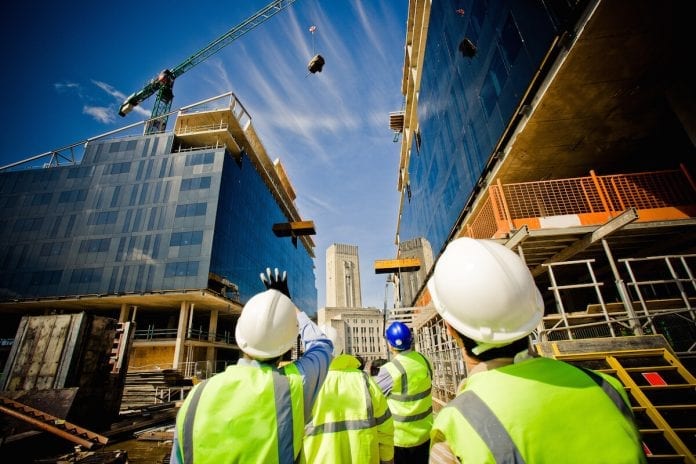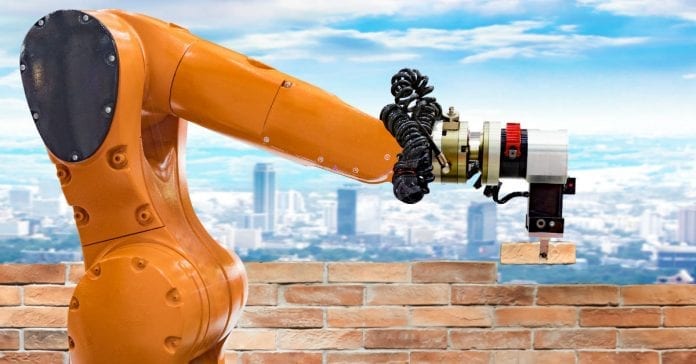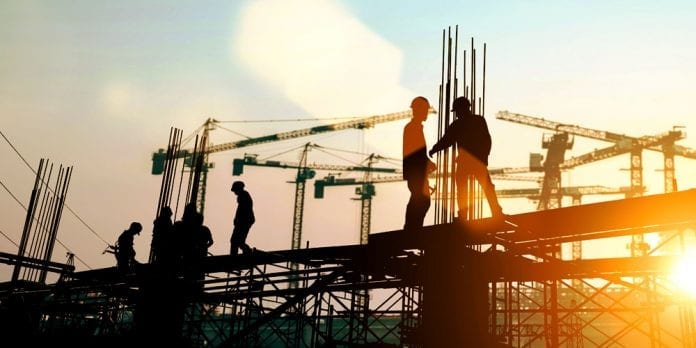It’s reasonable to predict that many construction businesses will be unable to make it through 2024. But, for those that are prepared to change the way things are done, there is scope to build a resilient business.
Safety will (still) be one of your key construction challenges this year. But it’s the way your business responds to new and ongoing safety challenges that will impact performance and get you through 2024.
In this article, we are going to examine the facts, and many of them are not pretty. By taking a long, hard look we can find opportunities.
That’s what this article is about: exposing ways to protect and grow your construction business in 2024.
So: let’s take a closer look.
An overview of the construction industry

First, the bad news:
It is self-evident that the COVID-19 pandemic has had a profound effect on the construction. Project completion times are being extended. Projects are suspended or even cancelled. Others are delayed because permits are difficult to obtain. Building equipment and materials procurement, and supply chain challenges have a significant impact. And, there’s a sharp drop off in construction starts.
The data paints a grim picture:
- About 67% of construction firms have reported project delays or cancellations since the outbreak of the pandemic.
- 2 Years of GDP gain has been lost as a result of a $61 billion industry loss.
- Approximately 40% of construction companies have reported terminating workers.
- The construction industry is responsible for 10% of total unemployment.
Will the Construction Industry recover?
And yet, according to the Dodge 2024 prediction, we can expect a slow and uneven recovery throughout the year. The report says that total U.S. construction starts will increase by 4%. (Dodge is a mainstay in construction industry forecasting and business planning.)
So: there are opportunities for those companies that can adapt to new demands and permanent changes.
But how?
Simply put: by embracing technology to create a safer working environment and develop a resilient workforce.
Yes, safety has always been a significant factor on construction sites. Now COVID-19 is making it a priority in other ways. And, surprisingly, there’s more to it than masks, sanitizer and social distancing.
This article talks about why addressing the safety-labour-technology interaction will prepare your construction company to stay in business in 2024.
Persistent challenges for construction businesses

Even before COVID-19, construction firms were having problems containing costs, meeting deadlines, and taking on new projects. Pre-pandemic, the biggest contributors were:
- Economic uncertainty
- Labor shortages
- Technology
- Substance abuse
- Defect claims
- Prefabricated and modular construction
With all that has happened, these challenges haven’t disappeared. However, there is a shift in priority. Now, besides economic uncertainty, the most insistent challenge is the safety, labor, technology triangle.
Let’s see how these challenges of 2024 have evolved into similar-yet-different ones in 2024.
Newsflash: Safety isn’t a stand-alone issue

Yes, both General Contractors and subcontractors have had to adjust to permanent changes. Health precautions now dictate:
- how many workers can be on a site
- how physically close they can work
- increased offsite or near-site production.
However, in 2024, creating a safe working environment goes beyond on-site virus protection. It has a direct impact on attracting talent.
Labor challenges facing the Construction Industry
Whereas pre-pandemic, finding skilled workers was difficult for construction companies, now this is exacerbated by having to let valuable employees go.
One step further, the construction companies who have been able to call back workers who were laid off are faced with a surprising obstacle. Even in the face of rising unemployment, some are refusing to return to work, citing virus concerns, family responsibilities or a preference for unemployment benefits.
So, hiring for skilled trades continues to be a challenge. The Associated General Contractors of America reports that 82% of construction companies believe filling positions will be difficult for the foreseeable future.
There is another side to this story. The upside is that there are skilled and experienced workers needing new employment. Opportunities exist for businesses that have managed to stay open, or reopen, to employ these experienced workers.
However, by and large the 2024 labor problem persists. Baby boomers are retiring, and on the other end of the spectrum, youngsters aren’t entering the industry.
For context, there will be about 5 million open positions once all the baby boomers in the construction industry have retired. Yes: 5 MILLION.
Clearly, there are problems attracting people to the industry. According to the National Association of Home Builders (NAHB), only 3% of people ages 18 to 25 are interested in pursuing a career in construction.
Safety issues in the Construction Industry
So we’ve got a situation where construction companies are forced to be less selective on who they hire in order to meet their staffing needs.
This is where we get to the safety aspect. Naturally, young, underqualified or inexperienced workers jeopardize on-site safety. Here’s a statistic from OSHA: workers under the age of 25 are twice as likely to be injured on the job as their experienced older counterparts.
The Construction Industry turns to technology

Now here’s an interesting observation: by embracing technology the industry will both improve safety measures and reduce labor challenges. Tech opportunities will attract fresh talent: millennials and Gen Z (the digital natives).
Up until now uptake of technology in the industry has lagged behind others. If you want your business to survive, now is the time to embrace tech. It’s not difficult to find day-to-day technical solutions that will improve your business output. The construction industry has some of the most impressive technology available.
4 Technology solutions for construction companies
1. Wearables
Wearables are designed to collect data related to safety. For example:
- site access can be controlled by way of biometrics;
- data can be collected and used to improve efficiencies; and
- common employee exposures like heat stress can be managed and reduced.
Wearable items include the Smart Helmets.
Anyone working in construction knows that one of the most essential items of safety gear is the helmet. With a Smart Helmet, safety is enhanced by augmented reality that offers 360o view of surroundings and reduction in workplace errors through augmented work instructions.
An adjacent value of improved safety measures is reduced insurance costs. With lower project budgets and increasing material and supply chain costs, saving on an essential risk-reducing precaution is a real bonus. Ask your insurance agent about reducing your General Liability, Builder’s Risk and Workers Comp payments.
2. GPS and telematics
Risky driving behavior is a real concern for construction firms, there are no exception. By adopting GPS and other telematics technology your business can both identify unsafe behaviors and improve efficiency. Implementation is recommended for general contractors and other contractors with light- and medium-duty vehicles.
3. Robotics

Robots can both improve safety by reducing musculoskeletal disorders by performing repetitive tasks such as painting and bricklaying. This means that robotics can also help with the labor shortage by replacing skilled workers.
4. Drones
Commercial drones also provide onsite safety. Thermal imaging capabilities and can aid in the inspection of areas that are time-consuming, difficult or unsafe to evaluate.
Can you protect your construction business in 2024?

A proactive approach will go a long way to strengthening your construction business in 2024 and beyond. It will require investment in technology and getting serious with your business insurance policies.
Companies that embrace tech systems and solutions will attract digital natives who, in turn, will increase productivity and safety by improving your systems. Besides addressing labor issues, technology will play a big part in improving on-site safety and performance as much as how an insurance coverage can play a big part in overcoming risks. Here’s a link written by a team of insurance experts at Contractorsliability.com guiding all business owners in getting their policies, read more about What Requirements Are Needed To Obtain a General Contractors Insurance?
Old challenges under new conditions call for new solutions. Technology solutions are no longer simply about collecting data to monitor performance. Carefully chosen tech will allow your construction business to develop a resilient workforce. This is the kind of team that will survive 2024.









